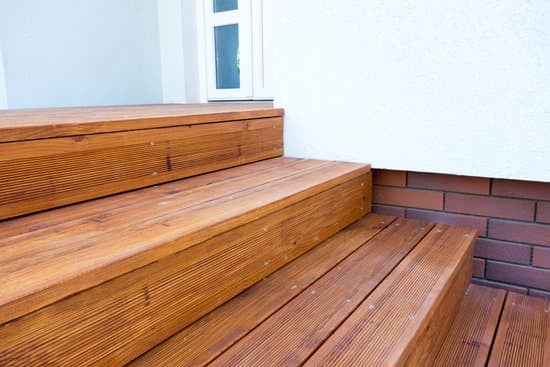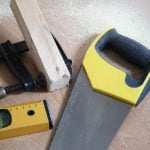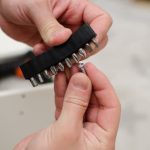In order to keep our homes comfortable and cool during the hot summer months, a well-performing AC system is essential. However, simply having an AC unit installed is not enough – it is crucial to optimize its performance for maximum efficiency and effectiveness. By taking certain steps to enhance your home AC system, you can not only improve your comfort but also save on energy costs in the long run.
A properly functioning AC system offers numerous benefits beyond just providing relief from the heat. It helps maintain indoor air quality, reduces humidity levels, and ensures a healthier living environment. Moreover, by optimizing your AC performance, you can significantly lower your energy consumption, which translates into lower utility bills. With rising concerns about environmental sustainability and energy conservation, improving your home’s AC efficiency will not only benefit you but also contribute to a greener future.
Throughout this article, we will explore various ways to enhance your home’s AC performance. We will delve into understanding how an AC system works and assess its current status in your home. We will also discuss strategies for maintaining proper insulation, enhancing airflow, and performing regular cleaning and maintenance tasks. Furthermore, we will consider options for upgrading your AC unit to a more efficient model and provide tips on efficient usage of the system.
By implementing these suggestions and seeking professional assistance when necessary, you can ensure that your home’s AC system performs optimally year-round. So let’s get started on discovering the best practices to improve your home’s AC performance for enhanced comfort and energy savings.
Understanding the Basics
An air conditioning (AC) system is a complex mechanical system that provides cool and comfortable air to your home. Understanding how an AC system works and the key components involved is essential for optimizing its performance.
The basic principle behind an AC system is the transfer of heat from inside your home to the outside environment, creating a cooling effect. This process involves a refrigerant, which is a chemical compound that circulates through various components of the AC system.
The key components of an AC system include:
- Compressor: The compressor pressurizes and pumps the refrigerant, allowing it to circulate through the system.
- Condenser: The condenser cools down and condenses the refrigerant by releasing heat to the outdoor environment.
- Evaporator: The evaporator absorbs heat from indoor air as the refrigerant evaporates, causing cold air to be blown into your home.
- Expansion valve: The expansion valve controls the flow of refrigerant into the evaporator, regulating the cooling process.
To better understand how an AC system works, it can be helpful to visualize it as a closed loop cycle. The refrigerant starts in a gaseous state at low pressure and temperature, then enters the compressor where its temperature and pressure are increased.
From there, it flows into the condenser where it releases heat and becomes a high-pressure liquid. Next, it moves through the expansion valve where its pressure decreases before entering the evaporator where it absorbs heat from indoor air and evaporates again.
By having a clear understanding of these basic concepts and components of an AC system, you will be better equipped to assess its current performance and identify potential areas for improvement.
Assessing Your AC System
One of the first steps in improving your home AC performance is to assess your current system and identify any potential areas for improvement. By understanding how well your AC system is currently performing, you can make informed decisions on how to optimize its efficiency and effectiveness. Here are some tips on assessing your AC system and identifying areas that may need improvement:
- Check Airflow: One of the easiest ways to determine if your AC system is working properly is to check the airflow throughout your home. Is there consistent airflow in each room? Are there any rooms that seem to have weak or no airflow? If certain rooms are not getting proper cooling, it could be a sign that there are issues with the ductwork or air registers.
- Listen for Unusual Noises: Pay attention to any strange noises coming from your AC system when it is running. Unusual sounds such as banging, squealing, or rattling could indicate that something is wrong with the internal components of the system. These noises may be a sign of worn-out parts or loose connections, which can contribute to decreased performance.
- Monitor Cooling Effectiveness: Take note of whether your AC system is able to cool your home effectively and maintain a comfortable temperature. If you find that it takes longer than usual for your home to reach the desired temperature or if you need to continuously lower the thermostat setting, it may indicate that your AC system is not functioning optimally.
Once you have assessed the performance of your AC system, you can start identifying specific areas for improvement. This could include cleaning or replacing air filters, maintaining condenser coils, insulating air ducts, or even upgrading to a more efficient model if necessary. Regularly assessing your AC system’s performance will ensure that it operates at its best and helps you save energy and money.
| Assessment Tip | Action |
|---|---|
| Check Airflow | Ensure consistent airflow in each room. If certain rooms have weak or no airflow, inspect ductwork and air registers. |
| Listen for Unusual Noises | If strange noises are present, investigate potential issues with internal components such as worn-out parts or loose connections. |
| Monitor Cooling Effectiveness | Note the time it takes to reach desired temperature and if continuously lowering the thermostat setting is necessary. |
Maintaining Proper Insulation
Insulation plays a crucial role in optimizing AC performance and ensuring energy efficiency in your home. Without proper insulation, your AC system may have to work harder and consume more energy to maintain the desired temperature, leading to higher energy bills. This section will explore the importance of insulation and provide practical tips on insulating your home effectively.
Insulation acts as a barrier against heat transfer, preventing hot air from entering your home during the summer and trapping warmth inside during the winter. By keeping the indoor temperature stable, insulation helps reduce the load on your AC system and allows it to operate more efficiently. In fact, according to the Department of Energy, adding insulation can save you up to 20% on cooling and heating costs.
There are several areas in your home that may benefit from additional insulation. These include:
- Attic: Adding insulation in the attic is one of the most effective ways to improve energy efficiency. It is recommended to have at least 12-15 inches of insulation in an attic space.
- Walls: Insulating exterior walls can help prevent thermal bridging and heat transfer between indoor and outdoor environments.
- Windows and Doors: Sealing gaps around windows and doors with weatherstripping or caulking can prevent drafts and heat loss.
- Floors: Insulating crawl spaces or adding insulation under floors can help maintain a comfortable indoor temperature throughout the year.
To determine if your home needs more insulation, you can conduct a visual inspection or hire a professional energy auditor. They can assess your home’s current insulation levels and recommend appropriate upgrades based on local climate conditions.
In order to ensure proper installation of insulation, it is important to follow manufacturer’s guidelines, use quality materials, and consider factors such as R-value (thermal resistance) which measures how resistant an insulating material is to heat flow. Investing in good quality insulation not only improves AC performance but also increases overall comfort in your home all year round.
| Area | Insulation Recommendations |
|---|---|
| Attic | 12-15 inches of insulation |
| Walls | Exterior wall insulation to prevent thermal bridging and heat transfer |
| Windows and Doors | Seal gaps with weatherstripping or caulking to prevent drafts and heat loss |
| Floors | Crawl space insulation or insulation under floors for comfort |
Enhancing Airflow
One of the key components to improving the performance of your home AC system is enhancing airflow. Proper air circulation throughout your home not only ensures that cool air reaches all areas, but it also helps to maintain a comfortable environment and optimize energy efficiency. In this section, we will explore some strategies for enhancing airflow and improving air circulation in your home.
- Proper Air Duct Maintenance: The first step in enhancing airflow is ensuring that your air ducts are clean and free from any obstructions. Over time, dust, dirt, and debris can accumulate in the ductwork, hindering the flow of air. Regularly cleaning or having your air ducts cleaned by a professional can greatly improve airflow and overall AC performance.
- Utilizing Fans Effectively: Fans are a cost-effective way to enhance airflow and improve comfort levels within your home. Ceiling fans, especially when used in conjunction with your AC system, can help distribute cool air more evenly throughout the rooms.
Make sure that ceiling fans are rotating counterclockwise during the summer months for optimal cooling effect. Additionally, using box fans or portable fans strategically can also help to increase airflow in specific areas where it may be lacking. - Ventilation Strategies: Another effective way to enhance airflow is through proper ventilation techniques. Opening windows and doors strategically can create cross-ventilation, allowing fresh air to circulate throughout your home and removing stagnant or hot air pockets. You can also utilize ventilating features on appliances such as range hoods and bathroom exhaust fans to remove heat and humidity from these areas.
By implementing these strategies for enhancing airflow, you can greatly improve the overall performance of your home AC system. Remember to regularly clean or have your air ducts cleaned, utilize fans effectively, and employ ventilation techniques for optimal results. Improving air circulation not only increases comfort levels but also helps to conserve energy by allowing for more efficient cooling throughout your home.
Cleaning and Maintenance
Regular cleaning and maintenance of your home AC system is essential in order to ensure optimal performance and energy efficiency. By following a few simple steps, you can keep your AC unit running smoothly and extend its lifespan.
Cleaning or Replacing AC Filters
The air filters in your AC system play a crucial role in maintaining good indoor air quality and efficient cooling. Over time, these filters can become clogged with dust, dirt, and other debris, restricting airflow and reducing the efficiency of your system. It is important to clean or replace your filters regularly to prevent this from happening.
To clean reusable filters, start by turning off the power to the unit. Remove the filter and use a vacuum cleaner or a soft brush to remove any accumulated dirt. If the filter is heavily soiled, you may need to wash it with mild soap and water. Once cleaned, allow the filter to dry completely before reinstalling it.
If you have disposable filters, they will need to be replaced instead of cleaned. Check the manufacturer’s instructions for guidance on how often this should be done – typically every one to three months depending on usage.
Maintaining Condenser Coils
The condenser coils are responsible for releasing heat from inside your home to the outside environment. Over time, these coils can accumulate dirt and debris, hindering their ability to transfer heat efficiently. Regularly cleaning the condenser coils can help improve performance.
Start by turning off power to the unit at the circuit breaker or disconnect switch. Use a hose with low-pressure water (you can attach a spray nozzle if needed) to gently rinse away any dirt or debris on the coils. Avoid using high-pressure water as it can damage delicate fins.
If there is stubborn dirt or grime that cannot be removed with water alone, you can use a coil cleaner specifically designed for this purpose. Follow the manufacturer’s instructions carefully when using these cleaners.
In addition to cleaning the coils, it is also important to keep the area around the outdoor unit clear of debris such as leaves, grass clippings, and branches. This will prevent airflow obstructions and allow your AC system to operate more efficiently.
Other Essential Maintenance Tasks
Aside from cleaning the filters and condenser coils, there are other maintenance tasks that should be performed regularly to keep your AC system in optimal condition. These include:
Regularly checking and tightening electrical connections
Inspecting and cleaning the blower motor and fan blades
Cleaning the drain line to prevent clogs and water damage
Lubricating moving parts to reduce friction
Checking refrigerant levels and recharging if necessary
Inspecting ductwork for leaks or damage
By performing these essential maintenance tasks on a regular basis, you can ensure that your home AC system operates at peak performance, providing you with consistent comfort and energy savings.
Upgrading Your AC System
When it comes to improving the performance of your home AC system, one option to consider is upgrading your current AC unit to a more efficient model. Upgrading can not only enhance the cooling capabilities of your home, but it can also lead to significant energy savings in the long run.
In this section, we will explore the factors you should consider when assessing whether to upgrade your AC system and provide guidance on choosing an energy-efficient and cost-effective model.
One of the key factors to consider when upgrading your AC system is its energy efficiency rating. Energy efficiency ratings are measured by SEER (Seasonal Energy Efficiency Ratio) for air conditioners. The higher the SEER rating, the more energy-efficient the unit is. Upgrading to a higher SEER-rated AC unit can result in lower electricity bills as well as reduced environmental impact.
Another important consideration is cost-effectiveness. While purchasing a high-efficiency AC unit may come with a higher upfront cost, it can often pay for itself over time through energy savings. It is essential to evaluate the potential energy savings against the initial investment when deciding on an upgrade.
| AC Model | SEER Rating | Estimated Annual Operating Cost |
|---|---|---|
| Model A | 12 | $600 |
| Model B | 16 | $450 |
| Model C | 20 | $350 |
As shown in the table, upgrading to Model C with a SEER rating of 20 can potentially save you $250 per year compared to Model A with a SEER rating of 12. While Model C may have a higher upfront cost, its lower annual operating cost makes it a more cost-effective choice in the long run.
Upgrading your AC system not only improves its performance but also contributes to energy conservation and reduced utility bills. By considering factors such as energy efficiency ratings and cost-effectiveness, you can make an informed decision that suits your needs and budget.
Tips for Efficient Usage
Setting temperature levels and utilizing programmable thermostats are essential strategies for efficient usage of your home AC system. By following these practical tips, you can maximize AC performance while conserving energy, resulting in greater comfort and cost savings.
- Set your thermostat to the optimal temperature: The ideal temperature for most homes is around 78 degrees Fahrenheit (25 degrees Celsius) during the summer months. This temperature strikes a balance between comfort and energy efficiency. Avoid setting the thermostat lower than necessary, as each degree lower can increase energy consumption by 3-5%. Additionally, consider raising the temperature when you’re away from home or asleep to further reduce energy usage.
- Utilize programmable thermostats: Programmable thermostats allow you to set specific temperature schedules throughout the day, automatically adjusting the cooling settings according to your preferences. Take advantage of pre-set programs or customize your own based on your daily routine. For example, you can program the thermostat to increase the temperature during work hours and lower it before you arrive home. This way, you only cool your house when it’s actually necessary, avoiding unnecessary energy consumption.
- Use zoning capabilities if available: Some programmable thermostats offer zoning capabilities, allowing you to control different areas or rooms independently. This feature is especially useful if certain parts of your home receive more sunlight or have different cooling requirements. You can set different temperatures for each zone, ensuring that each area remains comfortable while optimizing energy usage.
- Regularly maintain and calibrate your thermostat: Proper maintenance ensures that your thermostat functions accurately, leading to precise temperature readings and reliable performance. Periodically clean dust and debris from the thermostat’s sensor using a soft cloth or brush. If needed, recalibrate the thermostat following manufacturer instructions or seek professional assistance to ensure accurate temperature control.
By implementing these tips for efficient usage of your AC system through setting temperature levels and utilizing programmable thermostats, you can significantly improve your AC performance while conserving energy. This not only enhances comfort in your home but also leads to cost savings on your energy bills.
Energy-Saving Hacks
Using Blinds or Curtains Strategically
One effective energy-saving hack for reducing cooling costs and optimizing AC performance is to use blinds or curtains strategically. By properly utilizing window treatments, you can minimize the amount of heat that enters your home from the outside, thus reducing the workload on your AC system.
To make the most of blinds or curtains, it is essential to understand how they can help keep your home cool. Thick, light-colored curtains made from insulating materials can act as barriers against heat and sunlight. By closing these curtains during the hottest parts of the day, especially for windows that receive direct sunlight, you can block out a significant amount of heat and reduce the need for excessive air conditioning.
Similarly, utilizing blinds can also help regulate temperature and optimize AC performance. Angle blinds in a way that blocks direct sunlight from entering your home while still allowing some natural light to flow through. This not only helps prevent heat gain but also maintains a pleasant indoor environment with controlled lighting.
Utilizing Natural Ventilation
Another effective energy-saving hack is to harness natural ventilation to cool your home without relying solely on your AC system. By maximizing airflow and cross ventilation within your living space, you can reduce the need for artificial cooling and improve overall comfort.
To utilize natural ventilation effectively, start by opening windows strategically at specific times when outdoor temperatures are lower than inside temperatures. For example, open windows in the early morning or evening when there is a cool breeze outside. This allows fresh air to enter your home and circulate naturally without relying on air conditioning.
Additionally, consider using exhaust fans in areas such as kitchens or bathrooms where steam or heat may accumulate. These fans help remove hot air and humidity from indoor spaces, aiding in maintaining a cooler interior temperature.
By combining strategic window opening with targeted use of exhaust fans, you can create a natural cooling effect within your home while minimizing reliance on your AC system and achieving energy savings.
Other Energy-Saving Hacks
In addition to using blinds or curtains strategically and utilizing natural ventilation, there are several other creative tips and tricks that can help reduce cooling costs and optimize AC performance.
One such hack is to use ceiling fans in conjunction with your AC system. Ceiling fans create a wind-chill effect that can make you feel cooler without actually changing the temperature of the room. By using a ceiling fan while running your AC at a slightly higher temperature, you can reduce energy consumption without sacrificing comfort.
Another tip is to minimize heat-generating activities during the hottest parts of the day. For example, avoid using appliances that generate heat, like ovens or dryers, during peak daytime hours. This helps prevent unnecessary heat buildup in your home, ultimately reducing reliance on air conditioning.
Additionally, consider using programmable thermostats that allow you to schedule temperature adjustments throughout the day based on when you’re typically away from home or asleep. By automatically adjusting indoor temperatures during these periods, you can save energy by avoiding excessive cooling when it’s not necessary.
Overall, by implementing these energy-saving hacks and integrating them into your daily routine, you can effectively reduce cooling costs, optimize AC performance, and contribute to greater energy efficiency in your home.
Professional Assistance and Maintenance
Regular maintenance and professional assistance play a vital role in optimizing the performance of your home AC system. While there are some tasks you can do on your own, such as cleaning or replacing filters, certain maintenance tasks require the expertise of HVAC technicians. In this section, we will explore the benefits of seeking professional help, scheduling regular AC maintenance, and finding reputable technicians for more extensive improvements.
The Benefits of Professional Assistance
Seeking professional assistance for your AC system has several advantages. First and foremost, HVAC technicians have the knowledge and experience to accurately diagnose any issues with your system. They can identify problems that may be affecting its overall performance or efficiency. By addressing these issues promptly and effectively, you can prevent further damage to your system and potentially costly repairs down the line.
Furthermore, professional technicians have access to specialized tools and equipment that allow them to perform thorough inspections and maintenance tasks. They can efficiently clean condenser coils, check refrigerant levels, inspect electrical connections, and ensure proper airflow throughout your home. These tasks are crucial in maintaining optimal AC performance.
Scheduling Regular AC Maintenance
Regular maintenance is key to keeping your home AC system running smoothly and efficiently. It is recommended to schedule professional maintenance at least once a year. During these regular tune-ups, HVAC technicians will conduct a comprehensive inspection of your system and perform essential tasks like lubricating motors, tightening electrical connections, testing controls, checking thermostat settings, and cleaning or replacing filters.
By scheduling regular maintenance checks with professionals, you can extend the lifespan of your AC unit while minimizing the risk of breakdowns during peak usage times. Additionally, routine maintenance helps improve energy efficiency by ensuring that all components are operating at their optimal capacity.
Finding Reputable HVAC Technicians
When it comes to finding HVAC technicians for AC system maintenance or more extensive improvements, it is essential to choose reputable professionals. Start by seeking recommendations from family, friends, or neighbors who have recently had their AC systems serviced. You can also check online reviews and ratings of local HVAC companies to get an idea of their reputation and reliability.
When contacting potential technicians, ask about their credentials and certifications. Reputable professionals should possess the proper licenses and certifications that demonstrate their expertise in heating, ventilation, and air conditioning systems. Inquire about their experience with your specific AC system model or any additional qualifications they may have.
Conclusion
In conclusion, this article has highlighted various key points to improve the performance of your home AC system. We have discussed the importance of understanding how an AC system works and assessing its current performance to identify potential areas for improvement. Maintaining proper insulation and enhancing airflow are essential in optimizing AC performance, which can be achieved through practical tips provided in this article.
Additionally, cleaning and maintenance tasks such as replacing AC filters and maintaining condenser coils contribute to the efficient functioning of your AC system. It is also worth considering upgrading your current unit to a more energy-efficient model, taking into account factors such as energy efficiency ratings and cost-effectiveness.
Furthermore, setting temperature levels and utilizing programmable thermostats can maximize AC performance while conserving energy. Energy-saving hacks like using blinds or curtains strategically and utilizing natural ventilation provide additional ways to reduce cooling costs. However, it is important to note that seeking professional assistance and scheduling regular maintenance are crucial for extensive improvements and ensuring optimal performance in the long run.
Frequently Asked Questions
How can I make my AC more effective?
To make your AC more effective, there are a few steps you can take. Firstly, ensure that your AC unit is properly maintained and regularly cleaned. Clean or replace the air filters to improve airflow and maintain the unit’s efficiency.
Consider installing ceiling fans or using portable fans in conjunction with your AC to help circulate cool air throughout the room. Additionally, minimizing heat gain by insulating doors and windows, closing curtains during peak sunlight hours, and using reflective window coatings can help prevent warm air from entering your home and allow the AC to work more effectively.
Why is my AC not strong enough to cool my house?
There could be several reasons why your AC is not strong enough to cool your house adequately. One possibility is that the size of the AC unit may not be appropriate for the square footage of your home. If it is too small, it may struggle to keep up with cooling demands.
Another reason could be a lack of proper maintenance or cleaning of the AC unit, resulting in reduced efficiency and performance. It’s also important to consider factors such as inadequate insulation or air leaks in your home, which can lead to heat gain and affect the AC’s ability to cool effectively. Consulting with a professional HVAC technician can help identify and address any underlying issues causing insufficient cooling.
How can I make my air conditioner colder in my house?
There are a few ways you can make your air conditioner colder in your house without adjusting its thermostat setting excessively low. Firstly, ensure that all windows and doors are closed tightly to prevent warm outside air from entering your home. Consider using reflective films on windows to block out excess sunlight and reduce heat gain inside the house.
Insulating walls, attics, and ductwork can also prevent cold air loss and aid in maintaining lower temperatures indoors. Finally, if possible, avoid activities that generate additional heat indoors during hot periods, such as using ovens or running multiple electronic devices simultaneously. These measures combined should help make your air conditioner cooler in your house without putting excessive strain on the system or driving up energy consumption.

I’m thrilled to have you here as a part of the Remodeling Top community. This is where my journey as an architect and remodeling enthusiast intersects with your passion for transforming houses into dream homes.





